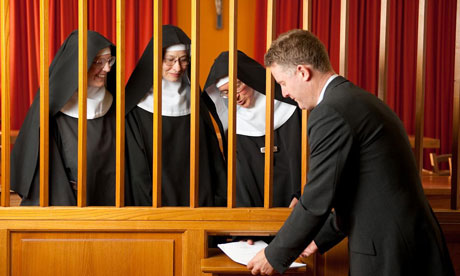Dom Daniel Saulnier’s Gregorian Chant: A Guide is online. The entire world of Catholic music is grateful to Edward Schaefer for doing the translation and also putting the translation into the commons through a gift to the Church Music Association of America. Gratitude also goes out to Solesmes and to the author himself for granting permission for this fantastic development.
There is something of a history here that I would like to share, with details that to me suggest a providential hand at work. In the background of this important monograph is that splendid reality that all the great intellectual and spiritual writings on chant are now in the commons: Dom Mocquereau, Dom Gajard, Dom Johner, and so many others. There are hundreds of texts available now, and many books too, including the Ward books and so many others. We owe this to the fact that many of these works were written before the age of outrageous copyright restrictions and also the wonderful reality that most publishers didn’t care enough about these books to renew their copyrights before the deadline. They thus landed in the commons, and we are all better off for it. They can now teach the world.
It has been a source of frustration to me that Dom Saulnier’s book has been the exception. The publisher of the book is to be commended for their existing beautiful edition but the publisher’s model exclusive the progressive methods of making books free online, and hence this one work was trapped behind the bars of exclusivity and caged in paper, with seemingly no end in sight.
Something remarkable happened only a few days ago. Dr. Schaeffer called to reveal that he had done his own translation of this work back in 2003 and that this book was published by Solesmes. Later, however, an American publisher had arranged a different translation that was still very similar and made it available with the cooperation of Solesmes (which is mercifully free with its permissions these days). That left this first translation in a limbo state that Schaeffer himself only noticed a few weeks ago. He immediately saw the opportunity and arranged to have the rights to the translation transferred back to himself. He turned out and gave the translation into the commons. This is why you can now read this book for free online.
To me, this is just a thrilling sequence of events, something I imagined was hopeless just came into being without any notice. It happened out of the blue – thanks to generosity and prayer. Because of this gift, this text now belongs to the ages and can now begin educating the entire world.
The CMAA will produce a print edition in a matter of weeks (at most) but, in the meantime, please begin now to benefit from this modern treasure of the chant literature.



